
Bee Removal in Moscow, TX
Trusted bee removal Moscow, TX by Spot On Pest Control, LLC. Get expert solutions to protect your property. Call now and schedule quick removal service.

Bee Removal in Moscow, TX
Bee removal in Moscow, TX requires a careful, local-first approach that balances safety, structural protection, and pollinator preservation. In North Texas, spring and summer bring peak bee activity and swarming. Hives can appear in attics, wall voids, eaves, hollow trees, fence posts, and under porches. Left unchecked, colonies can cause structural damage, attract other pests, and pose serious risk to people and pets. This page explains how professional bee removal and relocation works, what to expect during assessment and service, and practical steps to reduce the chance of future colonization in Moscow homes.
Why Moscow, TX homes need professional bee removal
- Hot summers and a mix of rural and suburban landscaping make Moscow attractive to honey bees and other stinging insects.
- Swarms are common in spring as colonies split; swarms may settle briefly on yards, trees, or structures.
- Established colonies inside walls or attics can grow large, producing honey and comb that stain, rot wood, and attract pests.
- Distinguishing honey bees from wasps, hornets, or carpenter bees is essential because removal options and legal or conservation considerations differ.
.webp)
Common bee and stinging insect scenarios in Moscow, TX
- Swarm clustering on trees, fences, or porch railings during spring or early summer
- Honey bee colony established in attic, wall cavity, or chimney
- Nest in soffits, eaves, or under decks
- Carpenter bees boring into fascia boards and porch columns
- Hornet or wasp nests under eaves or in shrubs that require different safety protocols
Initial assessment: species, location, and risk
A thorough assessment determines the safest, most appropriate solution.
- Species identification: Confirm whether the insects are honey bees, bumble bees, wasps, hornets, or carpenter bees. Honey bees are valuable pollinators and often relocated; other species may require different handling.
- Hive location and access: Inspect from outside and, when safe, from interior access points to evaluate comb size, brood presence, proximity to living spaces, and potential structural damage.
- Colony size and activity: Swarms are usually temporary and easier to remove; established colonies with brood need careful extraction to avoid future reinfestation.
- Risk analysis: Consider family members with allergies, pets, proximity to neighbors, and entry points that allow bees into living areas.
Humane removal and relocation options
When the colony is honey bees and relocation is practical, professionals prioritize humane removal.
- Live removal and transfer: Technicians remove comb and bees into a removable hive or nucleus box, often capturing the queen to encourage the colony to relocate with minimal stress.
- Swarm capture: Swarms that are clustered in accessible places are typically captured with a box or gentle vacuum and transferred to a hive for relocation.
- Frame-based extraction: For comb in walls or attics, combs may be removed and transferred to frames, ensuring brood and honey are preserved when possible.
- Timing considerations: Live removal is often scheduled when most bees are active and foraging, or at times that reduce risk to occupants and increase chances of successful relocation.
When removal involves non-humane or exclusion methods
Some situations require alternative methods for safety or feasibility.
- Wasps, hornets, and aggressive stinging insects: These often cannot be relocated safely and are managed with targeted removal procedures that prioritize safety.
- Inaccessible nests deep inside structural cavities: When relocation risks structural compromise or is impractical, removal may involve cutting out comb and treating the cavity to prevent reinfestation.
- Final measures: After removal, treated cavities are cleaned, dried, and sealed to prevent re-colonization.
Safe removal procedures for stinging insects
Technicians follow strict safety protocols to protect residents and themselves.
- Personal protective equipment: Full bee suits, veils, gloves, and in some cases respirators for chemical treatments.
- Containment and staging: The work area is secured and residents and pets are kept at a safe distance during active removal.
- Night work for aggressive species: Removal of wasp and hornet nests is often performed at night when insects are less active.
- Controlled use of smoke or minimal repellents: For honey bees, smoke can calm bees during relocation. Use of insecticides is limited and applied only when necessary to ensure long-term safety.
- Disposal and sanitation: Removed comb, honey, and debris are handled to prevent secondary pests and odor issues.
Swarm cleanup and follow-up repairs
Removing the bees is only part of the job.
- Comb and honey extraction: Comb left in cavities can continue to cause damage and attract pests; thorough removal minimizes future problems.
- Structural cleanup: Residual honey and wax are cleaned and affected insulation or wood replaced when needed to prevent mold and rot.
- Sealing entry points: After removal, technicians seal holes, vents, and gaps where bees entered to stop new colonies from moving in.
- Inspection and monitoring: Follow-up checks help ensure no remaining bees or attractants remain and confirm the effectiveness of exclusion measures.
Preventing future colonization in Moscow homes
Practical prevention reduces the likelihood of repeat infestations.
- Seal gaps and screens: Repair damaged fascia, soffit vents, and siding gaps. Install fine mesh over vents and chimney openings.
- Repair and replace rotted wood: Carpenter bee and wasp problems often start in deteriorated wood.
- Trim trees and shrubs: Keep vegetation away from eaves and rooflines to reduce sheltered entry points.
- Remove attractants: Securely cover garbage, clean up fallen fruit, and avoid leaving open sweet drinks or pet food outdoors.
- Routine inspections: Annual checks in spring can catch early signs of nesting before a full colony establishes.
Benefits of timely, professional bee removal
- Reduces risk to family, pets, and neighbors from stings and allergic reactions
- Prevents structural damage and costly repairs from long-term comb build-up and honey staining
- Protects local pollinator populations when humane relocation is used
- Restores safe access to attics, walls, and exterior spaces with long-term exclusion measures
Professional bee removal in Moscow, TX combines accurate species identification, safe procedures, and thoughtful prevention to protect both your home and local pollinators. Understanding the type of infestation and choosing a method that fits the situation ensures the best outcome for safety, structural integrity, and the environment.
Choose Spot On Pest Control, LLC. for Expert Bee Removal in Moscow, TX
When it comes to protecting your home, family, and property from unwanted bee infestations, trust the proven expertise of Spot On Pest Control, LLC. Our team combines safe removal practices, humane relocation methods, and long-term prevention strategies to ensure your home remains secure and pest-free. Whether you’re dealing with a swarm, an established hive, or other stinging insect problems, we deliver reliable solutions tailored to your needs.
Call Spot On Pest Control, LLC. today to schedule your professional bee removal service in Moscow, TX and keep your home safe, secure, and bee-free!
Our Services
Our pest control services cover ants, termites, bed bugs, rodents, mosquitoes, and other common pests, with customized solutions for both residential and commercial properties.
.png)






